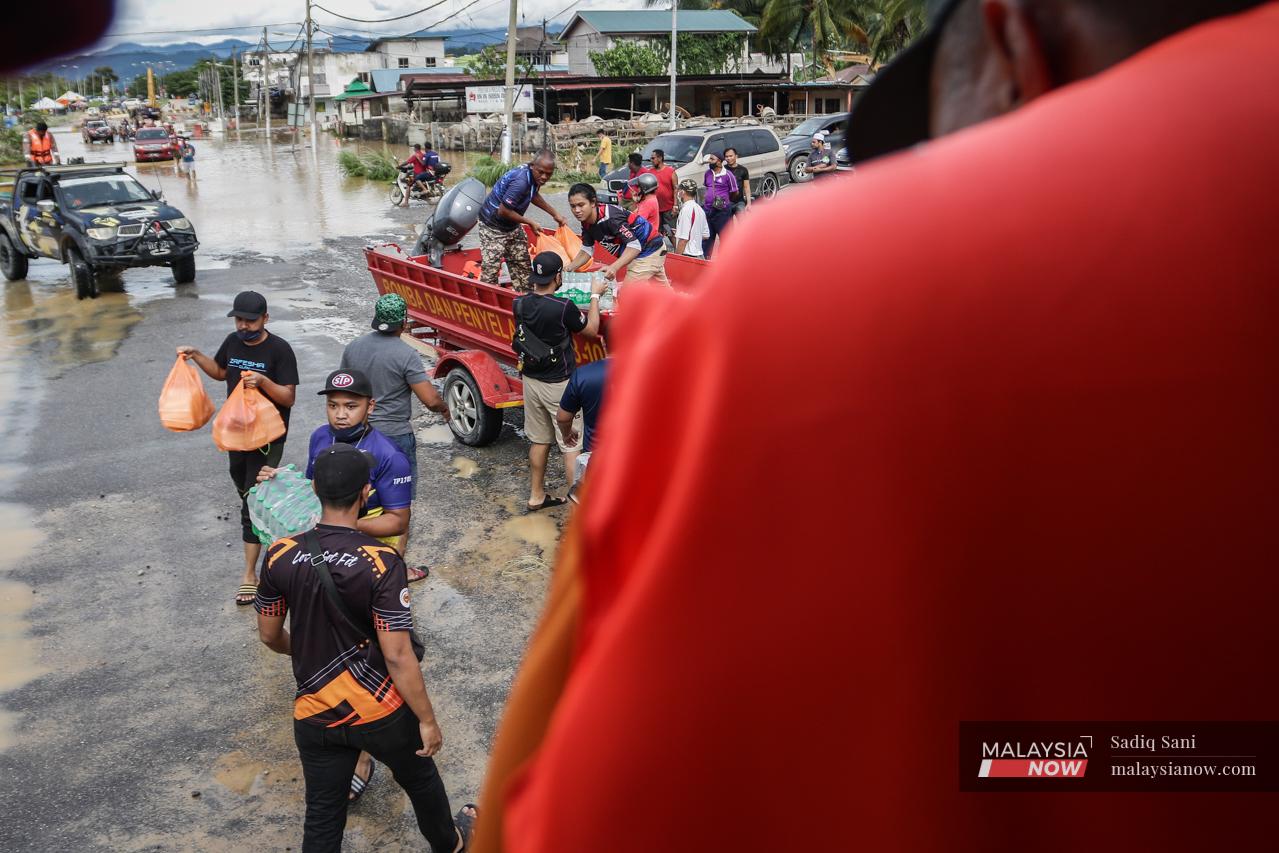The chain of command in handling flood relief
The National Disaster Management Agency says the individuals or agencies responsible during flood situations differ according to the extent of the crisis.
The recent floods which covered much of the Klang Valley after days of unprecedented rainfall, submerging areas in the country’s richest state of Selangor, have seen many voicing their dissatisfaction with state and federal governments alike over the delay in search and rescue efforts.
In Shah Alam alone, the floods in Taman Sri Muda saw residents forced to spend the night on their roofs, sparking more complaints on social media platforms about the government’s response.
The National Disaster Management Agency (Nadma) was among the government bodies that came under fire after a news portal said it had obstructed the military from mobilising assets for rescue efforts.
Nadma later denied the claims.
Its director-general Aminuddin Hassim said the individuals or agencies responsible during flood situations differ according to the extent of the crisis.
If floods occur in more than one state, the flood relief mission is led by the prime minister who will chair the Central Disaster Management Committee with Nadma as its secretariat.
“If the prime minister is not there, Nadma will make decisions directly,” Aminuddin told MalaysiaNow.
“We will instruct the army commanders to prepare the necessary mechanisms while the police will be asked to establish operation centres in each affected area, and to ensure that everything is ready for use.”
Aminuddin said preparations at the central level for flood disasters actually began on Sept 13, when Prime Minister Ismail Sabri Yaakob chaired the Central Disaster Management Committee.
“This means the prime minister had already determined the preparations to be made, how many personnel to be stationed and the location of each relief centre, where to collect the food and the role of the state health departments, and so on,” he said.
“Each agency already knew its role.”
He said technical agencies such as the Meteorological Department or MetMalaysia were also involved, with forecasts made for monsoon season from November to March next year.
From Sept 13 until November, Aminuddin said, individual state governments should have made arrangements for a disaster management meeting in order to make a risk assessment.
He said this would have allowed the authorities to estimate how a disaster might occur as well as its manpower and assets such as boats and lorries for deployment during times of crisis.
“In this situation, each agency reports to the prime minister. If the prime minister is not available, they report to Nadma,” he said.
On the massive floods which hit several areas in Selangor, Aminuddin said district officials had been ready but did not possess enough assets.
He said the flood situation in the state should serve as a lesson for states which do not expect to be so hard hit.
“We already know that climate change is happening, and that it is becoming a major concern,” he added.
“The mud floods at Gunung Jerai in Kedah were one of the indicators of unusual weather changes this year.”
Aminuddin urged all quarters to continue improving their efforts for flood preparation.
“When the disaster management committee met on Sept 13, there was space for them to make the necessary preparations,” he said.
“We also conducted simulations for certain scenarios to ensure that we could respond in a timely manner.”
He said such practice runs are a frequent occurrence in Pahang, Terengganu and Kelantan.
If floods occur on a smaller scale, for example in a single district, Aminuddin said the district officials are responsible for leading the disaster management committees.
“They will instruct the police to ready an operations room while the Civil Defence Force will arrange for a secretariat and respondent room for assistance and so on,” he said.
If the floods affect more than one district in a given state, efforts will be led by the state secretary as chairman of the state disaster management committee.
Aminuddin said the menteri besar or chief minister can lead flood relief missions but that the burden of responsibility remains on the state secretary.
“The police, army, Public Works Department and Irrigation and Drainage Department are all civil servants, and the chief civil servant is the state secretary,” he said.
Subscribe to our newsletter
To be updated with all the latest news and analyses daily.
